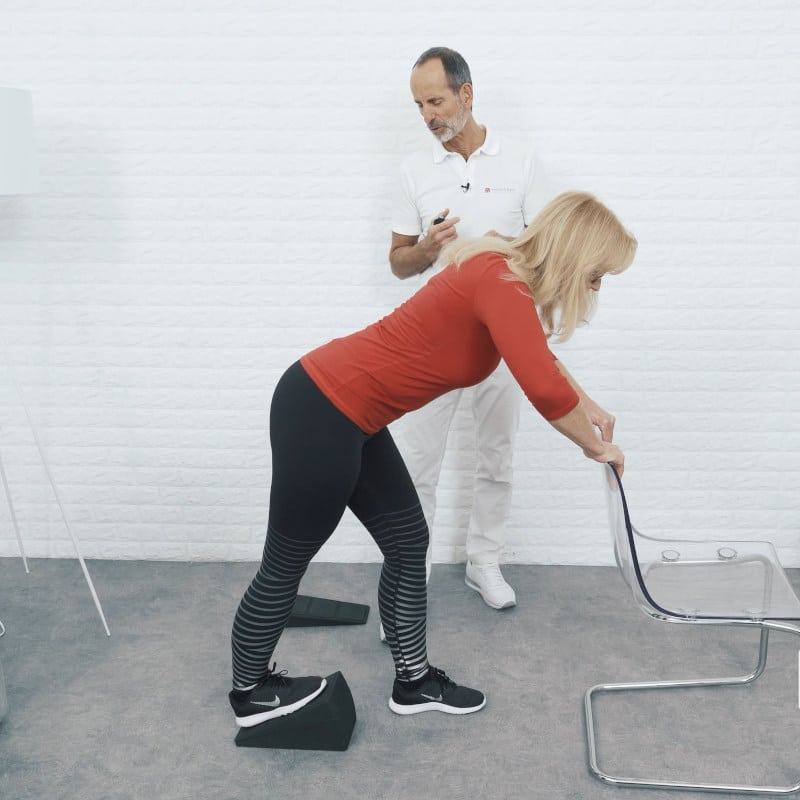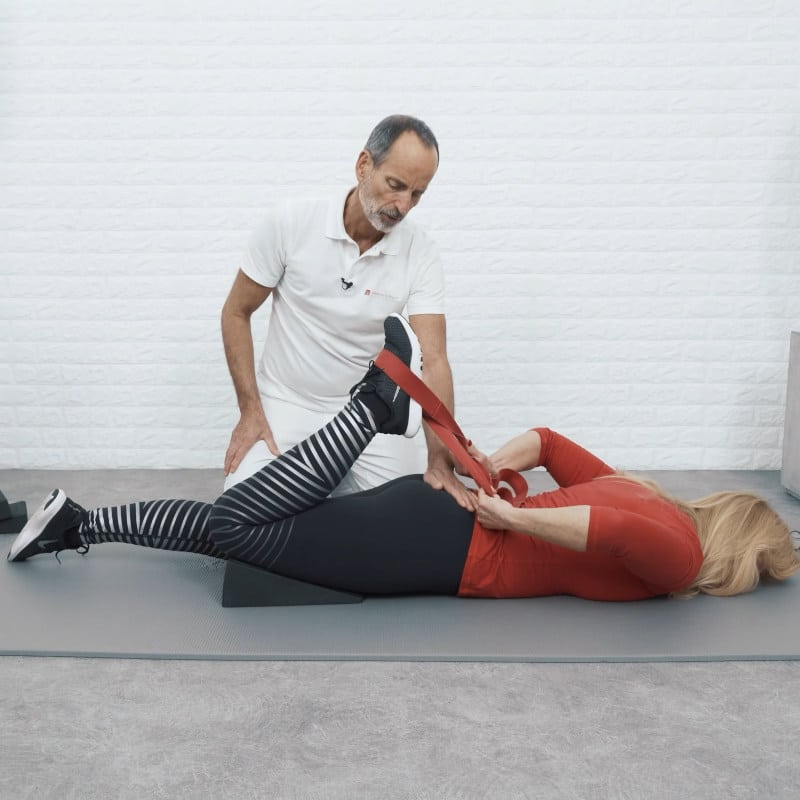Osgood Schlatter’s Treatment
Body Part:
Knee
Equipment:
Knee Hero & Stretching Strap
Level:
Beginner
Body Part:
Knee
Equipment:
Knee Hero & Stretching Strap
Level:
Beginner
Osgood-Schlatter disease (also known as osteochondrosis and tibial tuberosity) is a painful condition that causes swelling and irritation to the area at the top of the shinbone just below the knee. Osgood-Schlatter disease is a common cause of knee pain in athletic children and adolescents during their growth spurt, but it can also develop in adults. If an adult has Osgood-Schlatter’s disease, it’s likely that they have a history with the condition. Typically, Osgood Schlatter’s disease occurs in only one knee but can appear in both.
Physical activities that repeatedly stress the knees, like running, jumping, or squatting, can cause Osgood-Schlatter disease. Our knees are complex joints. The quadriceps tendons connect our thigh muscles to the knee joints, which the patellar tendon attaches to the shinbone. The point where the patellar tendon meets the shinbone is the growth plate. Any activity that causes the patellar tendon to repeatedly pull at the growth plate can ignite pain, swelling, and inflammation. Sometimes, a bony bump develops below the kneecap.
We’ve developed a 2-step Osgood Schlatter’s treatment that helps reduce pain by releasing tension in the calf muscles, knees, and thighs. It’s perfect for sporty adolescents, athletic adults, or anyone who is suffering pain from Osgood-Schlatter disease. All you need is the Knee Hero, the Stretching Strap, and a chair. If you don’t have our tools, you can use a book and a belt.

Sign up for our free newsletter and discover how to manage your pain yourself. Every two weeks, we’ll deliver follow-along videos and articles to your inbox.

For this stretch, you’ll need the Knee Hero and a chair.

For this stretch, you’ll need the Knee Hero and the Stretching Strap.
Perform our Osgood Schlatter’s treatment 6 days a week with one day off for rest. While you are rehabilitating your knee, we recommend taking a break from any strenuous activities that could aggravate your knee pain.

Sign up for our free newsletter and discover how to manage your pain yourself. Every two weeks, we’ll deliver follow-along videos and articles to your inbox.
Then we would be happy if you shared it with your friends: